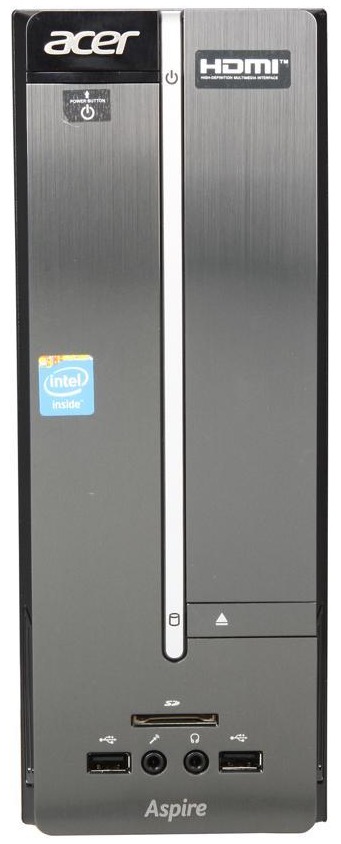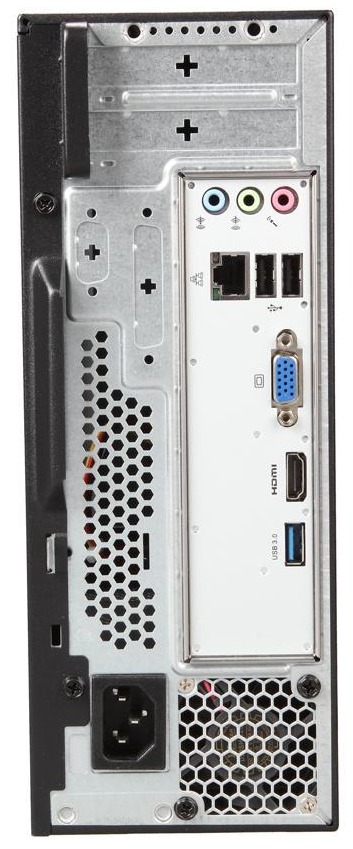'AcerDesktop1' BOOT-MENUS:
(tailored for a Linux install with a 'USB stick')
NOTE:
These boot-menu notes are preliminary.
I intend to bring up the Boot menu on
this 'AcerDesktop01' computer to more
carefully document the menu options
and their current settings.
Since I had no essential files in the Ubuntu-MATE 16.04 system
on this 'AcerDesktop01' computer,
I was planning to upgrade from Ubuntu-MATE 16.04 to 18.04
by simply overlaying the 16.04 system of files --- by doing an
install-from-USB-stick like I usually do to overlay (with a Linux 'distro')
the Microsoft Windows operating system on a computer.
I had downloaded a copy of the Ubuntu-MATE 18.04
'.iso' file from the Ubuntu-MATE download page.
I had put the '.iso' file on a USB stick using a 'dd' command
--- as was described in a section in the Introduction above.
Before trying the install-from-USB-stick, I wanted to check the
Acer Boot Menus, as I usually do in such an USB-stick-install,
to make sure that the USB stick will be checked first, before
simply loading the current operating system from the internal
disk of the computer.
Also, because of the complications that arose when Microsoft
implemented a 'Secure Boot' mode via
UEFI that made it more complicated
to install Linux on personal computers with a Microsoft OS
installed, I wanted to make note of 'Secure Boot' and/or
'Legacy Boot' and/or 'CSM Boot' options that would appear
in the newer boot menus (since about 2012) --- where
CSM = Compatibility Support Module.
For this Acer desktop computer, one uses the 'Del' key to
bring up the BIOS menus. (This is mentioned briefly in some
text messages that show on screen when this 'AcerDesktop01'
computer is powered up.)
This is different from Acer netbook computers, on which
I always had to use the 'F2' key to access the computer's boot menu.
On 2019oct18, I HELD DOWN the 'Del' key before pressing the power-on
button of this 'AcerDesktop01' desktop computer.
The 'BIOS Setup Utility' menu (version 2.16.1242, Copyright 2002-2014, Acer Inc.)
showed up.
That Utility provided the following menu 'panel' names:
- Main
- Advanced
- Power
- Authentication
- Security
- Boot-Options
- Exit
(This is several more panel-menus than I was used to seeing
in the 'InsydeH2O' boot menus on Acer netbook computers ---
simply 'Main', 'Boot', and 'Exit'.)
The panel that I really needed to check was the 'Boot-Options' panel.
But I made notes on most of the other panels that I present below
(roughly, because my notes were incomplete and, in some areas,
hard to interpret).
In particular, see the 'Boot-Options' menu/panel/screen, below.
'Main' menu:
System Information
Version: P11-B1
Build date: 06/16/2014
Processor
Intel(R) Celeron(R) CPU J1900 @ 1.99 GHz
Core frequency: 2.00 GHz
Count: 4
Memory
Product name: Aspire XC-603G
System Serial Number: DTSUVAA00344104BBA3000
Base Board Series Number: DBSUL11001440805D330A1
Asset Tag Number: [blank]
System Date: [Fri 10/18/2019]
System Time: [14:52:13]
'Advanced' menu:
Four sub-menus were shown:
- Miscellaneous
- Advanced Chipset Configuration
- Integrated Peripherals
- PC Health Status
It might be a good idea to use that 'PC Health Status'
option periodically --- if I can remember to do it.
I did not take notes on these sub-menus.
'Power' menu:
I did not take notes on this menu.
'Authentication' menu:
System Boot State: User
Secure Boot Mode State: Enabled
Secure Boot: [Enabled]
Secure Boot Mode: [Standard]
Default Key Positioning: [Enabled]
On the right of these options, the following
help information was provided:
Secure Boot flow control.
Secure Boot can be enabled
only when 1. Platform Key (PK)
is enrolled and Platform is
operating in User mode and
2. CSM function is disabled
in setup.
'Security' menu:
Suprevisor Password: Not Installed
User Password: Not Installed
Change Supervisor Password: [Press Enter]
'Boot-Options' menu:
Boot Priority Order
1st Boot Drive: [CD&DVD]
2nd Boot Drive: [Removable Device]
3rd Boot Drive: [ubuntu]
4th Boot Drive: [LAN]
NOTE1:
When I installed Ubuntu-MATE 16.04 on this
desktop computer, it looks like the 3rd drive
(which was probably a Microsoft boot name) was
changed to 'ubuntu'.
NOTE2:
I used keys like the '-' key to switch
'Removable Device' to 1st and 'CD&DVD' to 2nd
--- to make sure my USB stick would be used first and
not the CD/DVD drive. (See the keys-guide at the
'Exit' menu below.)
Other sub-menus and options were:
> Hard Disk Drive Priority: [Press Enter]
> Optical Disk Drive Priority: [Press Enter]
> Removable Device Priority: [Press Enter]
> Network Device Priority: [Press Enter]
Boot Menu: [Enabled] [Hotkey F12 support during POST]
Quiet Boot: [Disabled]
D2D Recovery: [Disabled] [POST Recovery hot-key ALT-F10 support]
Halt On: [All, but Keyboard]
'Exit' menu:
Save & Exit Setup
Discard Changes and Exit Setup
Save Changes
Discard Changes
Load Default Settings
Save as User Default Settings
Load User Default Settings
Options at the lower right
of each boot menu:
right-arrow, left-arrow : Select Screen
up-arrow, down-arrow : Select Item
Enter: Select
+/-/space: Change option
F7: Restore User Defaults
F8: Save as User Default Settings
F9: Load Default Settings
F10: Save & Exit Setup
ESC: Exit
NOTE1:
ESC can be used to exit each submenu.
NOTE2:
The main keys I used were
right-arrow
left-arrow
down-arrow
up-arrow
Enter
- (minus sign)
ESC
|

